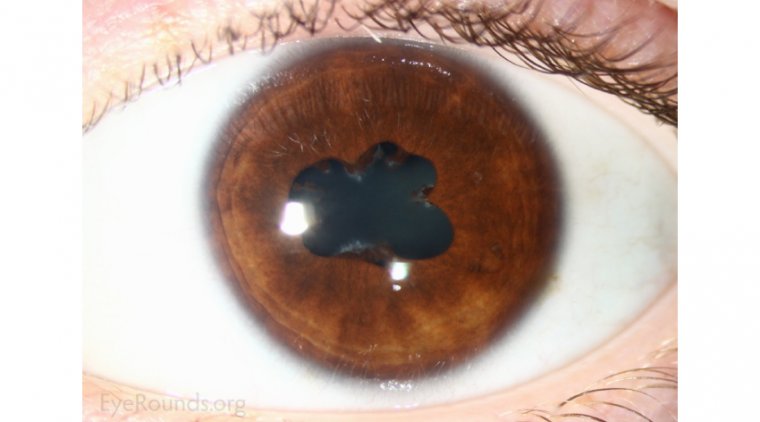Posterior synechiae refers to the adhesion of the iris to the anterior lens capsule, often as a sequela of intraocular inflammation such as anterior uveitis or iritis. If left untreated, these adhesions can lead to complications including secondary glaucoma, irregular pupil shape, impaired aqueous humor flow, and decreased visual acuity. Preventing posterior synechiae is essential for preserving ocular function and preventing vision-threatening consequences.

Pathophysiology and Risk Factors
Posterior synechiae develop when inflammatory cells and fibrinous exudates in the aqueous humor cause the iris to stick to the lens surface. The risk increases in conditions marked by anterior chamber inflammation, including:
- Acute anterior uveitis
- Traumatic iritis
- Post-surgical ocular inflammation
- Infectious or autoimmune ocular diseases
Timely intervention to control inflammation and maintain pupil mobility is key to preventing synechiae formation.
Core Strategies in the Prevention of Posterior Synechiae
1. Prompt Use of Cycloplegic and Mydriatic Agents
Cycloplegic drugs such as atropine and cyclopentolate serve dual functions: relieving pain by immobilizing the ciliary body and preventing adhesion by dilating the pupil. These agents help break early adhesions and prevent new ones from forming.
Recommended Regimens:
- Atropine 1%: 1 drop twice daily for severe inflammation
- Cyclopentolate 1% or 2%: 1 drop twice to three times daily in milder cases
Dilation maintains the mobility of the iris, preventing it from adhering to the lens surface.
2. Intensive Topical Corticosteroids
The inflammatory response must be rapidly subdued to reduce the exudative processes that lead to synechiae. Prednisolone acetate 1% remains the gold standard in topical corticosteroids for acute anterior uveitis.
Protocol:
- Severe inflammation: 1 drop every 1–2 hours during waking hours
- Taper gradually as inflammation resolves to prevent rebound effects
Adjunctive periocular or systemic corticosteroids may be indicated in resistant or bilateral cases.
3. Monitoring and Management of Intraocular Pressure (IOP)
Steroids can elevate IOP; thus, regular tonometry is critical, especially in long-term therapy. Elevated IOP itself can exacerbate the risk of iris-lens contact, thus promoting synechiae formation.
4. Adjunctive Antiglaucoma Medications
When IOP is elevated, selective use of pressure-lowering agents is warranted. Avoid miotics such as pilocarpine, which constrict the pupil and worsen synechiae risk.
Preferred options:
- Beta-blockers (e.g., Timolol)
- Alpha-agonists (e.g., Brimonidine)
- Carbonic anhydrase inhibitors (e.g., Dorzolamide)
5. Use of Systemic Immunomodulatory Therapy
For patients with chronic or recurrent uveitis associated with systemic diseases such as HLA-B27-associated spondyloarthropathy, sarcoidosis, or Behçet’s disease, immunosuppressive therapy is required.
Agents include:
- Methotrexate
- Azathioprine
- Biologics (e.g., Adalimumab)
A multidisciplinary approach involving rheumatologists may be beneficial.
Breaking Existing Posterior Synechiae
If posterior synechiae have already formed, pharmacologic and mechanical interventions can be attempted:
Pharmacologic Synechiolysis
High-potency mydriatics such as phenylephrine 10% combined with tropicamide or atropine can break fresh synechiae, particularly if treated early.
Mechanical Synechiolysis
For long-standing synechiae not responsive to drops:
- Surgical synechiolysis via viscoelastic agents during intraocular procedures
- Laser iridotomy or capsulotomy, in rare resistant cases
Post-Treatment Follow-Up and Prevention of Recurrence
- Schedule frequent follow-up in the acute phase (every 1–3 days initially)
- Once inflammation subsides, monthly reviews for 3–6 months are ideal
- Educate patients about early signs of recurrence: eye pain, redness, photophobia
- In recurrent uveitis cases, consider prophylactic cycloplegics during flare-ups
The prevention of posterior synechiae hinges upon early, aggressive management of intraocular inflammation, continuous pupil dilation, and patient-specific follow-up strategies. Implementing cycloplegic therapy alongside corticosteroids, closely monitoring IOP, and integrating systemic care when needed ensures favorable outcomes. Through a coordinated, evidence-based approach, we can preserve ocular integrity and prevent the long-term complications associated with synechial adhesions.